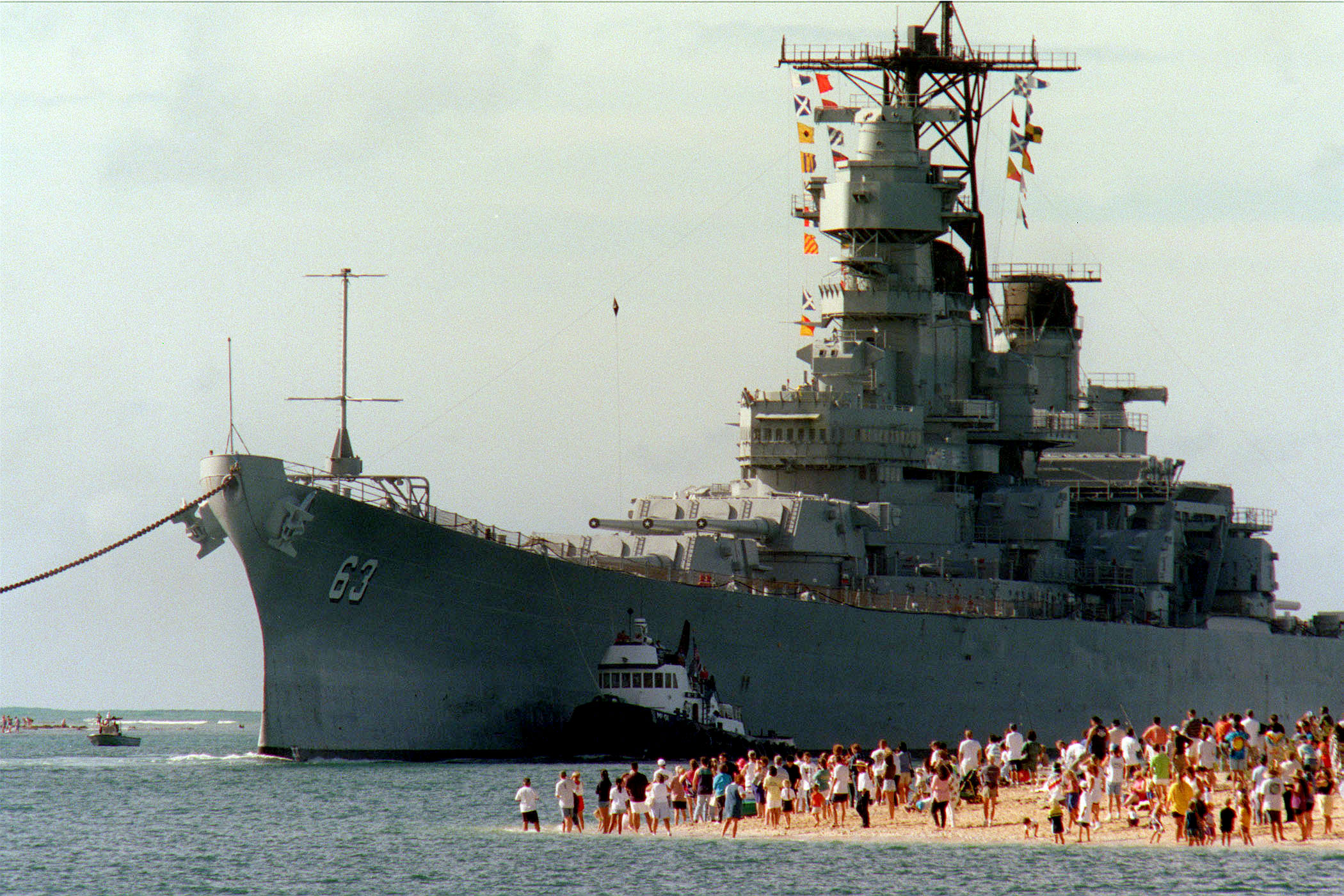- Jul 12, 2018
- 10,492
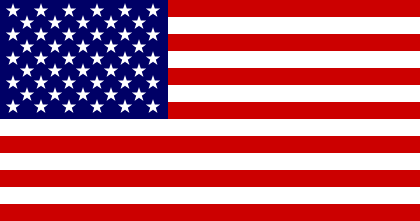
|
OPERATION FAIR WINDS |
TOP SECRET |

| 
NAVY DEPLOYMENT | 
|
|
BATTLE GROUP GOLD
Rear Admiral Vance Thibodeaux
Rear Admiral Vance Thibodeaux
| Order of Battle | Personnel | Garrison |
| Second Fleet HQ Support Unit | 250 Personnel | Naval Support Activity Hampton Roads, Virginia |
| Naval Intelligence | 150 Personnel | Naval Support Activity Hampton Roads, Virginia |
| Ship Class | Vessel | Compliment | Home Port |
| Iowa-class Battleship | USS Missouri* | Sailors: 1,800 /// 8 Pilots /// Troops: 156 Marines /// 4 NCIS Agents /// 2 USLHS Agents | Naval Support Activity Hampton Roads, Virginia |
| Iowa-class Battleship | USS Wisconsin | Sailors: 1,800 /// 8 pilots /// Troops: 156 Marines /// 4 NCIS Agents /// 2 USLHS Agents | Naval Support Activity Hampton Roads, Virginia |
| Spruance-class Destroyer | USS Peterson | Sailors: 334 /// 6 Pilots | Naval Support Activity Hampton Roads, Virginia |
| Spruance-class Destroyer | USS Caron | Sailors: 334 /// 6 Pilots | Naval Support Activity Hampton Roads, Virginia |
| Spruance-class Destroyer | USS David R. Ray | Sailors: 334 /// 6 Pilots | Naval Support Activity Hampton Roads, Virginia |
| Spruance-class Destroyer | USS Oldendorf | Sailors: 334 /// 6 Pilots | Naval Support Activity Hampton Roads, Virginia |
| Spruance-class Destroyer | USS John Young | Sailors: 334 /// 6 Pilots | Naval Support Activity Hampton Roads, Virginia |
| Spruance-class Destroyer | USS Comte de Grasse | Sailors: 334 /// 6 Pilots | Naval Support Activity Hampton Roads, Virginia |
| Spruance-class Destroyer | USS O'Brien | Sailors: 334 /// 6 Pilots | Naval Support Activity Hampton Roads, Virginia |
| Spruance-class Destroyer | USS Merrill | Sailors: 334 /// 6 Pilots | Naval Support Activity Hampton Roads, Virginia |
| Spruance-class Destroyer | USS Briscoe | Sailors: 334 /// 6 Pilots | Naval Support Activity Hampton Roads, Virginia |
| Spruance-class Destroyer | USS Stump | Sailors: 334 /// 6 Pilots | Naval Support Activity Hampton Roads, Virginia |
| Spruance-class Destroyer | USS Conolly | Sailors: 334 /// 6 Pilots | Naval Support Activity Hampton Roads, Virginia |
| Spruance-class Destroyer | USS Moosbrugger | Sailors: 334 /// 6 Pilots | Naval Support Activity Hampton Roads, Virginia |
| Spruance-class Destroyer | USS John Hancock | Sailors: 334 /// 6 Pilots | Naval Support Activity Hampton Roads, Virginia |
| Spruance-class Destroyer | USS Nicholson | Sailors: 334 /// 6 Pilots | Naval Support Activity Hampton Roads, Virginia |
| Spruance-class Destroyer | USS John Rodgers | Sailors: 334 /// 6 Pilots | Naval Support Activity Hampton Roads, Virginia |
| Spruance-class Destroyer | USS Leftwich | Sailors: 334 /// 6 Pilots | Naval Support Activity Hampton Roads, Virginia |
| Wasp-class Amphibious Assault Ship | USS Wasp | Sailors: 1,070 /// Pilots: 88 /// Troops: 1,687 Marines | Naval Support Activity Hampton Roads, Virginia |
| Tarawa-class Amphibious Assault Ship | USS Tarawa | Sailors: 930 /// Pilots: 57 /// Troops: 1,703 Marines | Naval Support Activity Hampton Roads, Virginia |
| Tarawa-class Amphibious Assault Ship | USS Saipan | Sailors: 930 /// Pilots: 57 /// Troops: 1,703 Marines | Naval Support Activity Hampton Roads, Virginia |
| San Antonio-class Transport Dock | USS San Antonio | Sailors: 361 /// 16 Pilots /// Troops: 699 Marines | Naval Support Activity Hampton Roads, Virginia |
| San Antonio-class Transport Dock | USS New Orleans | Sailors: 361 /// 16 Pilots /// Troops: 699 Marines | Naval Support Activity Hampton Roads, Virginia |
| San Antonio-class Transport Dock | USS Mesa Verde | Sailors: 361 /// 16 Pilots /// Troops: 699 Marines | Naval Support Activity Hampton Roads, Virginia |
| San Antonio-class Transport Dock | USS Green Bay | Sailors: 361 /// 16 Pilots /// Troops: 699 Marines | Naval Support Activity Hampton Roads, Virginia |
| San Antonio-class Transport Dock | USS New York | Sailors: 361 /// 16 Pilots /// Troops: 699 Marines | Naval Support Activity Hampton Roads, Virginia |
| Supply-class Support Ship | USS Arctic | Sailors: 206 / Pilots: 8 | Naval Support Activity Hampton Roads, Virginia |
| Henry J. Kaiser-class Replenishment Oiler | USS John Ericsson | 129 | Naval Support Activity Hampton Roads, Virginia |
DETAILS
Iowa-class - Fully Fueled; Non-perishable food/water for 3 month journey; x400 M4A1 Carbine and associated ammo and x400 M1911 and associated ammo in barracks;
Countermeasures: AN/SLQ-32, AN/SLQ-32, x8 Mark 36 SRBOC Super Rapid Bloom Offboard Chaff Rocket Launchers; x4 RHIBs;
Armaments: x9 16 in (406 mm)/50 cal Mark 7 guns, x12 5 in (127 mm)/38 cal Mark 12 guns, x8 Mk 143 Armored Box Launcher mounts (For 32 Tomahawks), x4 Mk 141 quad cell launchers (For 16 RGM-84 Harpoon anti-ship missiles), x4 20 mm/76 cal Phalanx CIWS;
Aircraft: x1 Sikorsky MH-60S;
Spruance-class - Fully Fueled; Non-perishable food/water for 4 month journey; complete storage of usable fuel for all conventionally-powered vessels for 6 month journey; complete storage of aviation fuel for all aircraft in the fleet for 6 month deployment; x100 M4A1 Carbine and associated ammo and x100 M1911 and associated ammo in barracks; x2 RHIBs;
Armament: x2 5 in 54 caliber Mark 45 dual purpose guns; x2 20 mm Phalanx CIWS Mark 15 guns; x1 8 cell NATO Sea Sparrow Mark 29 missile launcher; x2 quadruple Harpoon missile canisters; x2 Mark 32 triple 12.75 in torpedo tubes (standard reserve of Mk 46 torpedoes); x1 21 cell RIM-116 Rolling Airframe Missile; Onboard: x30 M4A1 Carbine and associated ammo and x30 M1911 and associated ammo in barracks; x1 61 cell Mk 41 VLS: x61 RGM/UGM-109E Tomahawk Land Attack Missile;
Aircraft: x2 Sikorsky MH-60S.
Wasp-class - Fully Fueled; Non-perishable food/water for 4 month journey; complete storage of usable fuel for all conventionally-powered vessels for 6 month journey; complete storage of aviation fuel for all aircraft in the fleet for 6 month deployment;
Armament: x2 RIM-116 Rolling Airframe Missile launchers; x2 RIM-7 Sea Sparrow missile launchers; x3 20 mm Phalanx CIWS systems; x4 25 mm Mk 38 chain guns; x4 .50 BMG machine guns; x100 M4A1 Carbine and associated ammo and x100 M1911 and associated ammo in barracks; x4 RHIBs;
Aircraft: x22 MH-60S;
Landing Craft: x3 Landing Craft Air Cushion.
Tarawa-class - Fully Fueled; Non-perishable food/water for 4 month journey; complete storage of usable fuel for all conventionally-powered vessels for 6 month journey; complete storage of aviation fuel for all aircraft in the fleet for 6 month deployment; x100 M4A1 Carbine and associated ammo and x100 M1911 and associated ammo in barracks; x4 RHIBs;
Armament: x1 Mark 49 RAM missile system; x2 Vulcan Phalanx; x6 25 mm automatic cannons; x8 12.7 mm machine guns;
Aircraft: x19 CH-53E Super Stallion;
Landing Craft: x4 LCU 1610.
San Antonio-class - Fully Fueled; Non-perishable food/water for 4 month journey; complete storage of usable fuel for all conventionally-powered vessels for 6 month journey; complete storage of aviation fuel for all aircraft in the fleet for 6 month deployment; x100 M4A1 Carbine and associated ammo and x100 M1911 and associated ammo in barracks; x4 RHIBs;
Armament: x2 Bushmaster II 30 mm close-in-guns; x2 Rolling Airframe Missile launchers; x2 Mk 41 eight-cell VLS with quad-packed ESSMs; x3 twin M2 Browning machine gun turrets;
Aircraft: x4 MV-22B Osprey;
Landing Craft: x2 Landing Craft Air Cushion;
Vehicles: x13 AAVP-7A1; x1 AAVC-7A1.
Supply-class - Fully Fueled; Fully-stocked with non-perishable food/water for 6 month journey of the entire fleet (on top of the resources the respective ships already have); complete storage of usable fuel for aforementioned vessels; complete storage of aviation fuel for aforementioned aircraft; x2 Sikorsky MH-60S; Onboard: x100 M4A1 Carbine and associated ammo and x100 M1911 and associated ammo in barracks; x2 RHIBs.
Henry J. Kaiser-class Replenishment Oiler - Fully Fueled; Fully-stocked with non-perishable food/water for 6 month journey; complete storage of usable fuel for all conventionally-powered vessels for 6 month journey; complete storage of aviation fuel for all aircraft in the fleet for 6 month deployment; Onboard: x30 M4A1 Carbine and associated ammo and x30 M1911 and associated ammo in barracks; x2 RHIBs.
|

| 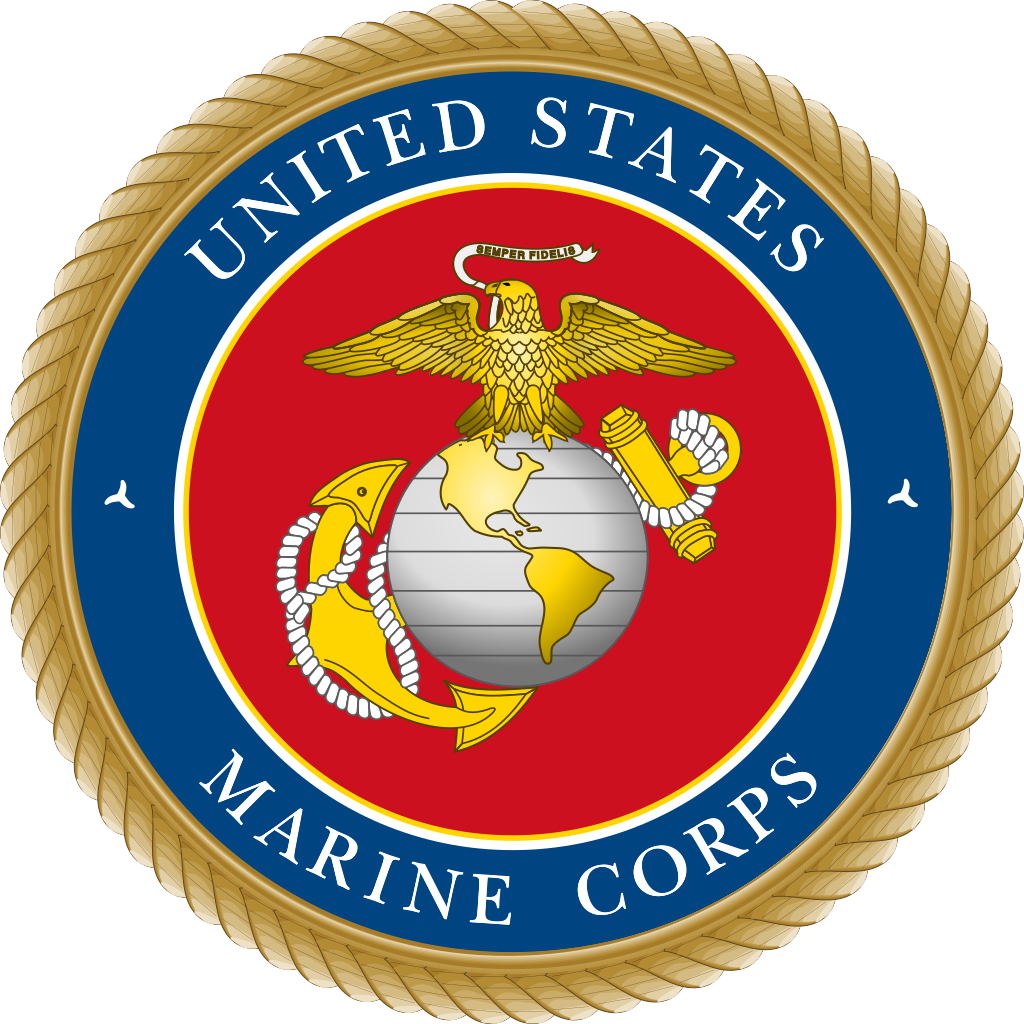
MARINE CORPS DEPLOYMENT | 
|
|
MARINE EXPEDITIONARY FORCE
1ST MARINE DIVISION
Brigadier General Archibald Walker
1ST MARINE DIVISION
Brigadier General Archibald Walker
| Order of Battle | Personnel | Garrison |
| 1st Marine Division HQ Support Unit | 250 Personnel | Naval Support Activity Hampton Roads, Virginia |
| Signal Intelligence and Sustainment Company | 150 Personnel | Naval Support Activity Hampton Roads, Virginia |
1ST MARINE REGIMENT
Colonel Stephen Rogers
Colonel Stephen Rogers
| HQ Support Company | 250 Personnel | Camp Pendleton, California |
| 1st Amphibious Battalion, 1st Marines | 1000 Personnel | Camp Pendleton, California |
| 2nd Amphibious Battalion, 1st Marines | 1000 Personnel | Camp Pendleton, California |
| 3rd Amphibious Battalion, 1st Marines | 1000 Personnel | Camp Pendleton, California |
| 4th Amphibious Battalion, 1st Marines | 1000 Personnel | Camp Pendleton, California |
3RD MARINE REGIMENT
Colonel Matthew Hunt
Colonel Matthew Hunt
| HQ Support Company | 250 Personnel | Camp Lejeune, North Carolina |
| 1st Amphibious Battalion, 3rd Marines | 1000 Personnel | Camp Lejeune, North Carolina |
| 2nd Amphibious Battalion, 3rd Marines | 1000 Personnel | Camp Lejeune, North Carolina |
| 3rd Amphibious Battalion, 3rd Marines | 1000 Personnel | Camp Lejeune, North Carolina |
| 4th Amphibious Battalion, 3rd Marines | 1000 Personnel | Camp Lejeune, North Carolina |
DETAILS
Marines - (All per soldier) Well rested and fed;
Apparel: x1 Enhanced Combat Helmet, x1 cold-weather combat uniform, x1 warm-weather combat uniform, x1 Full Spectrum Battle Equipment Amphibious Assault Vest, x1 part of Marine Combat boots; x1 The Individual First Aid Kit;
Weapons: x1 M4A1 5.56mm Carbine (x1 30-round magazine loaded; x7 additional 30-round magazines); x1 Beretta M9A1 (x1 15-round magazine loaded; x2 additional 15-round magazines); x1 OKC-3S bayonet.
|
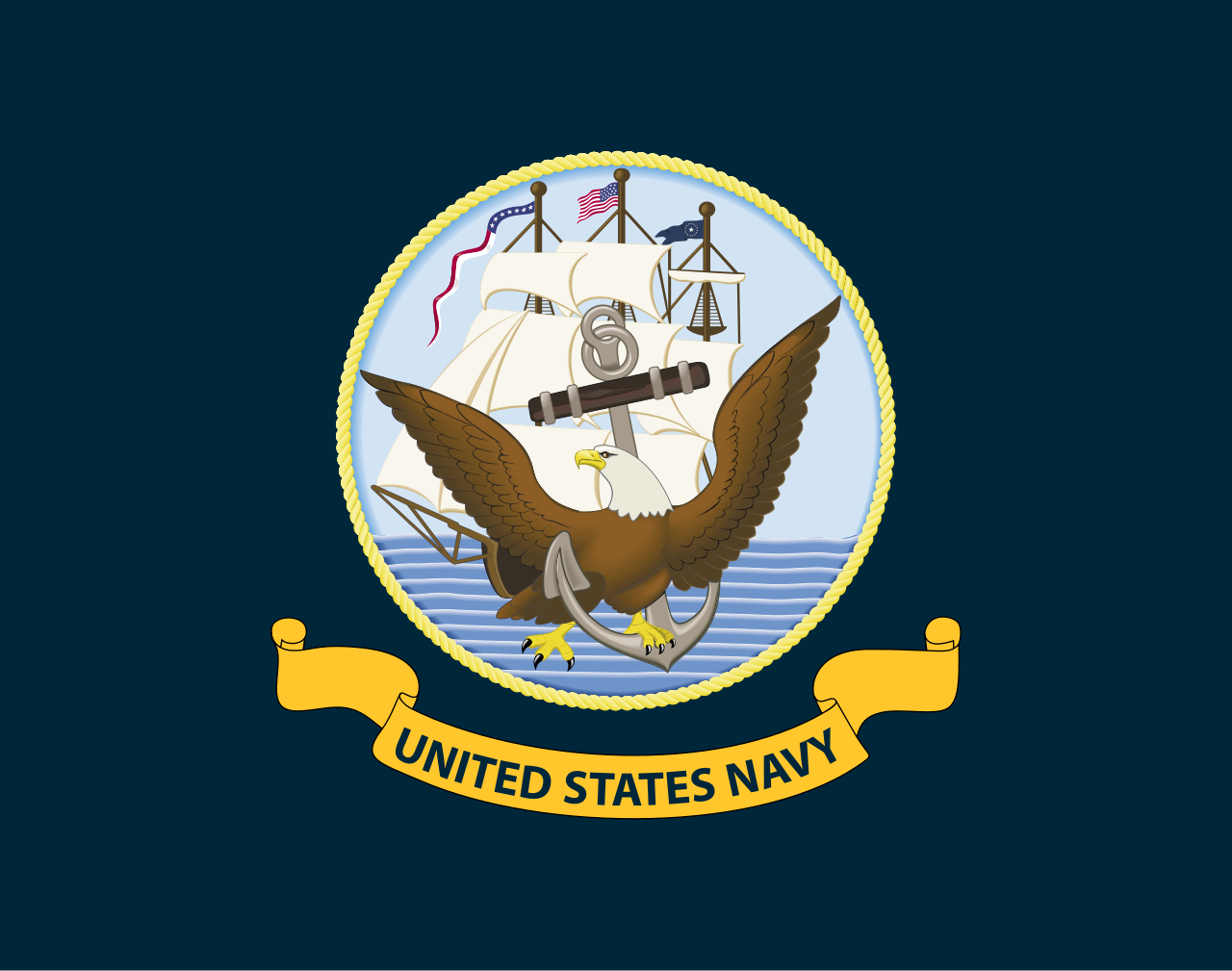
| 
DEPLOYMENT ORDERS | 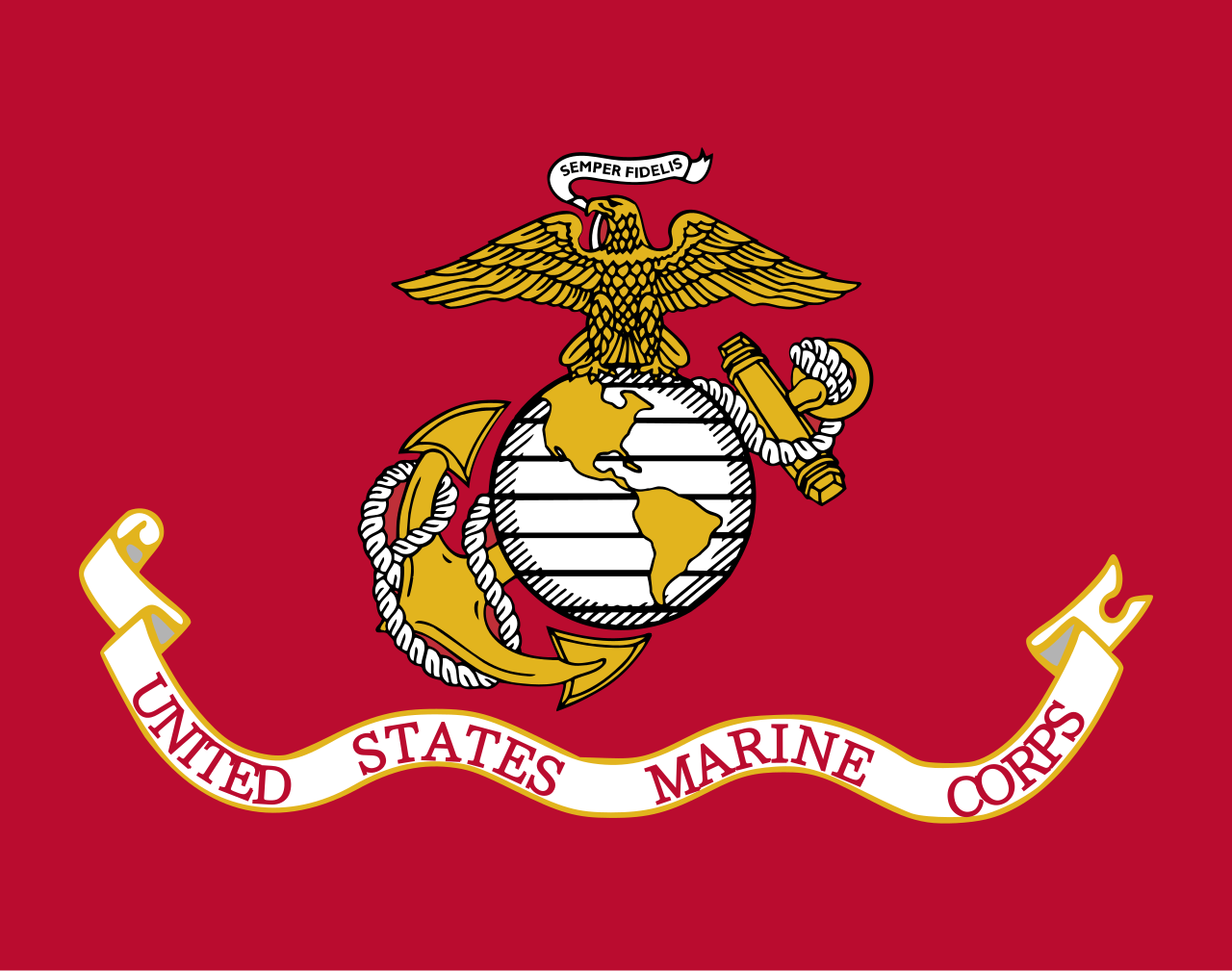
|
|
CONTEXT
The situation regarding Turkey had now come to a boiling point. It was clear to the State Department, the top brass of the armed forces, and most importantly the White House that direct armed conflict on a massive scale between the United Coalition and Turkey was inevitable. One evening in the Situation Room at the White House, after careful consideration, President Gore ordered that the entire Marine Expeditionary Force of the United States Marine Corps be deployed to the United Kingdom in preparation for a ground invasion of Turkey. The Commandant of the Marine Corps, General Sawyer Simon, told the President that the Marine Corps would immediately begin transporting all Marines to the East Coast with their gear. The Navy committed the battleships Missouri and Wisconsin, along with sixteen destroyers, and multiple amphibious assault ships to transport and protect the Marines, as well as to possible be directly deployed to the rest of the European theater with Task Force 101 and Task Force 3.
ATLANTIC THEATER
All Marines in the 1st Marine Division were immediately called to their muster stations and all leave was cancelled. The Department of Defense paid for Marines to be transported by rail, air, or road to Naval Support Activity Hampton Roads in Virginia. In order to make an impression on the public, the Marines were ordered to travel in their blue dress uniforms to Virginia (whereafter they would change into their combat uniforms before deploying). The Air Force would fly in Marine vehicles that were being initially deployed for this mission to Virginia where they would then be transported to Hampton Roads. All Marines would arrive at Hampton Roads in 48 hours or less and organize for their deployments. During these two days, the Navy would prepare all of the vessels, perform emergency maintenance checks around the clock, load weapons and vehicles onto the ships, load and check weaponry to ensure that it was operational, and load the crews aboard to prepare them for deployment. After the 48 hours had passed, the vessels would unceremoniously begin their deployment from Hampton Roads at three in the morning in order to avoid prying eyes. The ships would all successfully deploy and travel in a formation of the two battleships in front with the amphibious assault ships and transport docks in the center of the formation, the destroyers surrounding the formation, and support ship and oiler following behind. All of the ships would maintain safe distances from each other to avoid collision. While travelling, all of the vessels would be operating their active and passive radars and sonars to scan the air, surface, and subsurface of the sea for any potential threats. The current plan was to sail Battle Group Gold from Hampton Roads to about thirty miles west of the Isles of Scilly. From there, the fleet would hopefully be able to sail to a port where the Arctic and John Ericsson would be able to replenish themselves and the Marines could be unloaded to give them some breathing room. After the departure of the Battle Group Gold, the British Royal Navy would be securely informed by the Office of Naval Intelligence exactly what was heading their way and when it would arrive. A similar secure message would be sent to the Foreign Office from the State Department. The message from the Office of Naval Intelligence would specifically request that a port be made available to regularly replenish American ships and that a nearby military base or facility be made available to house the 8,900 Marines.
TRANSIT
FM>FN>GN>GO>HO>IO
|



